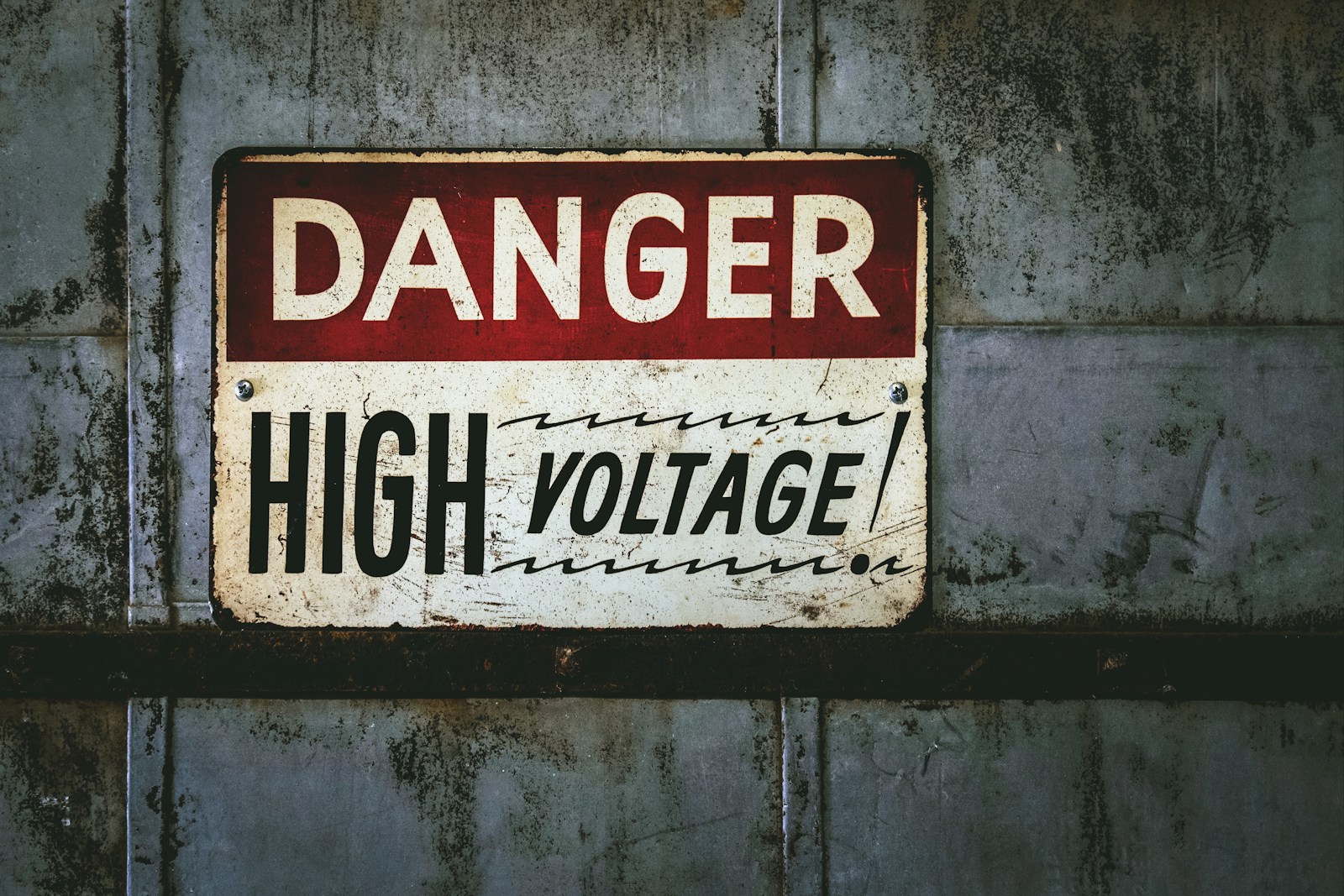When I installed my first Level 2 EV charger at home, I assumed I could just plug it in, start charging, and never think about it again. Then I learned the reality: voltage drops can affect how efficiently your electric vehicle charges, and occasionally, they can even cause safety issues or equipment damage.

If you’re a fellow EV owner who installed (or is considering installing) your own charger, you might be wondering how you can test for voltage drops on your own. The good news is, you don’t need to be a master electrician. With just a basic multimeter and a little caution, you can quickly check if your home setup is delivering the voltage your EV charger needs.
Here’s exactly how I do it, step-by-step, safely and simply.
Why Voltage Drop Matters for Your EV Charger
First, a quick explanation of why you should even care about voltage drop:
- Charging Efficiency: Voltage drops cause your charger to run less efficiently, resulting in slower charging speeds.
- Equipment Longevity: Consistent voltage drops can damage internal electronics in chargers over time.
- Safety Risks: Significant drops or unstable voltage can increase the risk of overheating components or even fire hazards.
Ideally, your home EV charger should consistently receive about 240 volts (in the U.S.). However, due to various factors—such as distance from your electrical panel, wiring condition, or the charger’s electrical load—your actual voltage might drop slightly.

Let’s find out how to measure it.
What You Need: Your DIY Voltage Drop Testing Kit
You’ll need just a few basic items for this quick DIY test:

- A Digital Multimeter (DMM)
Available at any hardware store or online for under $30. - Insulated Gloves (optional but recommended)
Extra safety never hurts. - A Notepad or Smartphone
To record your measurements easily. - Your EV charger manual (for reference to recommended voltage and current levels)
Step-by-Step Guide: How to Test Voltage Drops
Here’s my straightforward, no-nonsense method to quickly and safely test your EV charger’s voltage and amp draw.
✅ Step 1: Safety First—Turn Off Your Charger
Before testing, unplug your EV charger from your car and turn off the breaker connected to your charger. Always prioritize safety—no shortcuts here!
✅ Step 2: Set Up Your Multimeter
Set your digital multimeter to AC voltage. Usually, this is indicated by a “~V” symbol on your device.
- For home Level 2 chargers in the U.S., set your meter to the 600V AC range (or the next setting above 240V if your meter is adjustable).
✅ Step 3: Measure Voltage at the Breaker Panel (Baseline Measurement)
- Remove the panel cover (carefully!) at your electrical breaker box.
- Identify the breaker connected to your EV charger outlet or circuit.
- Touch your multimeter probes to the two hot terminals of the breaker (usually red/black or black/black for 240V circuits).
- Take note of this voltage reading. This is your baseline voltage.
Note: Typical baseline readings should be close to 240V. If it’s significantly lower, your entire home’s electrical system might need evaluation by a professional.
✅ Step 4: Measure Voltage at the EV Charger Outlet or Hardwired Connection
Next, move to your EV charger outlet (or directly to the terminals of your hardwired charger).
- Turn your breaker back ON to energize the circuit (careful now!).
- Insert your multimeter probes carefully into the outlet (if applicable). For a hardwired unit, measure across the incoming terminals.
- Write down this second reading.
Now, compare this reading with your baseline voltage from the panel. A difference of more than 3% (about 7 volts at 240 volts) suggests a voltage drop issue.
✅ Step 5: Test Amp Draw with a Clamp Meter (Optional but Recommended)
If you want to test further—especially if you suspect current draw problems—grab a clamp-style amp meter:
- Set the clamp meter to measure AC current (amps).
- Clamp around one hot wire feeding the charger while it’s operating.
- Note the current reading.
Your EV charger should draw amperage consistent with its rating (check your manual). If it’s lower or higher significantly, that could indicate wiring or charger issues.

Quick Reference Voltage Drop Chart
Here’s how much voltage drop you should accept:
| Voltage Drop % | Voltage Drop (at 240V) | Recommended Action |
|---|---|---|
| 0–3% | 0–7.2V | Normal, no immediate action needed |
| 3–5% | 7.2–12V | Consider wiring upgrade |
| Over 5% | 12V+ | Wiring upgrade strongly recommended |
If you’re consistently seeing drops over 5%, call a qualified electrician. Don’t wait until something goes wrong.
What to Do If You Find a Significant Voltage Drop
So what if your testing reveals a problematic drop? Here’s how to fix or improve it:
- Shorten Circuit Length: Move your charger closer to your breaker panel.
- Use Thicker Gauge Wiring: Upgrading your wiring gauge reduces resistance and voltage drop.
- Dedicated Circuit: Make sure your EV charger is on its own dedicated circuit to avoid interference or excess load.
Always consult an electrician if you’re uncertain.

FAQs: Voltage Drop Testing for EV Chargers
Q: Can voltage drops damage my electric car battery?
A: Usually not directly, but consistent drops can shorten the life of your charger, which might affect charging consistency and overall battery health.
Q: How often should I test for voltage drops?
A: Once per year, or anytime you notice unusually slow charging or performance issues.
Q: Is it normal to see slight voltage fluctuations?
A: Absolutely. Small fluctuations (under 3%) are normal.
Real-World Example: How I Solved My Voltage Drop Issue

When I first installed my charger, I noticed my charging speed wasn’t quite what the manual suggested. After running these tests, I discovered a 10-volt drop from the panel to the outlet. The culprit? I was using 14-gauge wiring instead of the recommended 8- or 6-gauge wire.
After upgrading the wiring, my charger operated flawlessly—exactly as it should.
Quick-Reference Checklist
| Task | Action | Frequency |
|---|---|---|
| Check Baseline Voltage | Measure at breaker panel | Yearly |
| Check Outlet Voltage | Measure at charger outlet | Yearly |
| Check Amp Draw | Clamp meter on hot wire | Optional (Yearly) |
| Upgrade Wiring (if drop >5%) | Consult electrician | As needed |

You Might Also Be Interested In:
- Best Home Chargers for Tesla Model 3
- How Long Does It Take to Charge a Tesla at Home?
- Maximizing Range: Cold Weather Tips for Tesla Model Y
- Best Portable EV Chargers Under $150
Testing for voltage drops may sound intimidating, but it’s surprisingly straightforward and can significantly improve your EV charging setup. Give it a try—I promise, once you’ve tested your setup, you’ll feel much more confident every time you plug in.
Let’s Talk Cars
Have a question? A suggestion? Just want to say hi?
You’re in the right place.
Use the form below to reach out to the AutoSpecs Daily team. We're happy to hear from readers, car lovers, first-time buyers, and anyone who's got something to share.
What can you contact us about?
- Feedback on one of our articles
- Ideas for new topics you'd like us to cover
- Questions about cars, gear, or general auto advice
- Media, partnership, or brand inquiries
- Anything else that's on your mind
We check every message that comes through and do our best to respond within 2 to 3 business days.
We don’t list an email address here to avoid spam, but the contact form is the best and fastest way to reach us.
Thanks for stopping by. We're glad you're here.

